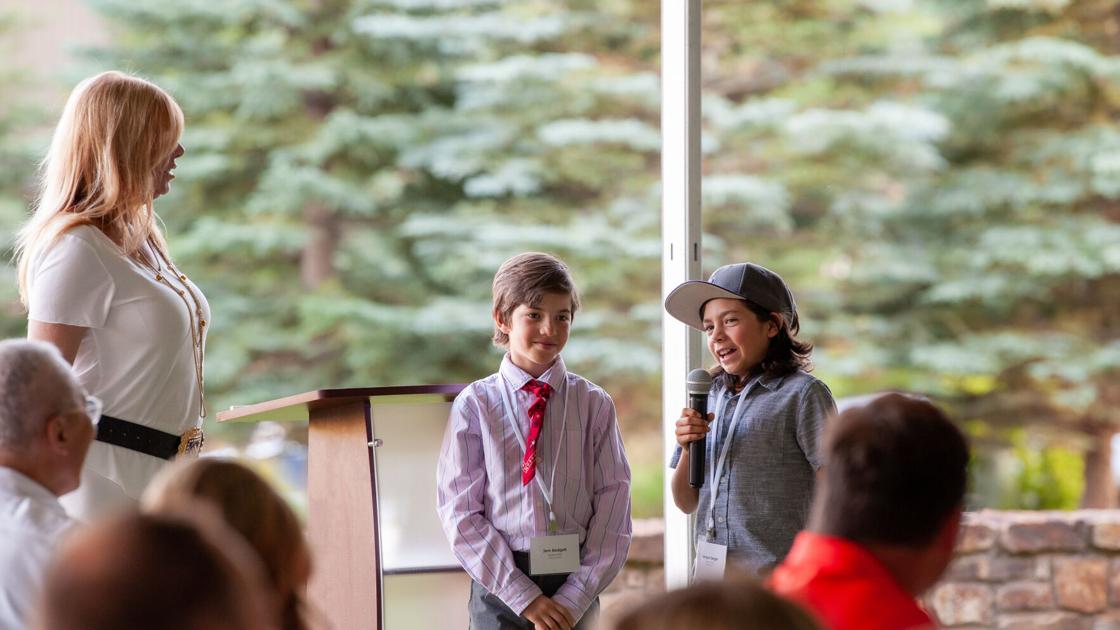Facing a continued shortage of homeless shelter spaces in Utah’s capitalThe state’s Homelessness Coordinating Committee voted Wednesday to approve nearly $19.5 million in funding for homeless services, with priority given to emergency shelters.
This comes at a cost, however, for initiatives such as rapid rehousing, transitional housing and prevention – programs that help people who have become homeless get back on their feet or prevent them from becoming homeless in the first place.
Over the past few years, “I don’t think any of us would have said that the emergency shelter category would have been our top priority because we know permanent housing and housing solutions really end homelessness for individuals,” Rob Wesemann, state committee member and co-chair of the Salt Lake Valley Coalition to End Homelessness, said Wednesday.
“But our community recognized that we had this new system and we needed to make sure it was stable and functional,” he continued. “So that has become the top priority for our local community.”
Capacity issues have plagued the Salt Lake City area’s new homeless resource centers – which have space for about 400 people less what could fit in The former emergency shelter of The Road Home — since their creation. And the 63 million dollar system began showing signs of early stress in Octobershortly after the opening of the first shelter.
This winter, the lack of space has prompted multiple high-profile protests, including an encampment at Salt Lake City Hall where 17 people were arrested for breaking curfew as they tried to draw attention to the issue. Weeks later, Salt Lake City Mayor Erin Mendenhall worked with homeless service providers to open a temporary emergency shelter in the Sugar House neighborhooda 145-bed facility that closed last week.
Mendenhall, a member of the state’s Homeless Coordinating Committee, argued at the time that emergency shelter was a temporary solution and called for more funding for affordable housing.
“We need to have housing, permanent supportive housing, case management, rehab and access to all of those services so that we don’t have to work in mid-January to find a solution again” l next year, she said. .
In total, the Homeless Coordinating Committee decided at its virtual meeting on Wednesday to pour some $12.5 million into emergency shelter efforts – of which about $10 million will be distributed to service providers. Salt Lake Valley region. This is still far from the $16.5 million requested overall for this programming.
While emergency shelters absorbed the bulk of the funding, rapid rehousing programs absorbed one of the biggest hits, with these programs receiving just $730,425 of the nearly $2.7 million that service providers had requested. And $1.2 million in requests for homelessness prevention efforts have been reduced to $327,600.
Overall, the state received $31.3 million in funding requests and was able to provide approximately $19.5 million for 41 agencies and 123 projects.
While the Homeless Coordinating Committee approves funding for the entire state, the Salt Lake Valley region typically receives the most funding, and this year was no exception. About 78% of all homeless dollars will be spent there in the next fiscal year.
This funding includes a potential solution for an operating budget deficit of $3 million which the three homeless resource centers had to contend with as their costs turned out to be considerably higher than previously thought. The state legislature has allocated half of the funding needed to close this gap, but service providers operating the centers will need to find matching funds before the money is released.
“We have some work to do trying to figure out how to fully fund resource centers in the Salt Lake County area,” said Kathy Bray, CEO of Volunteers of America Utah, which operates the women’s resource center.
Other parts of the state will see significantly fewer resources for homeless services, despite presentations to the state from several local homeless coordinating committees earlier this year describing increased demand for services in their regions.
Weber County, where a recent study found homelessness has grown at a much higher rate than in the Salt Lake Valley in recent yearswill receive 6.6% of all funding, while the Mountainland region – which includes Utah, Summit and Wasatch counties – will receive 4.9% of the total share.
Heather Hogue, project manager and coordinator of the Mountainland Continuum of Care, said she would like to see the money distributed with an increased eye on geographic equity in the future.
“I would sincerely encourage in the years to come to allocate more funds across the state,” she told committee members on Wednesday. “Because the need is there. We do not abuse funding in any way. And across the state, we’re doing such a good job with the money we’re given.
One of the biggest cuts to the Mountainland area was to its local domestic violence shelter, Hogue noted. The Center for Women and Children in Crisis had requested funding of just over $1 million, but only received $311,553.
“We know they’re over capacity, we know they’re turning people away, we know they need resources and money,” Hogue said, adding later that it was hard to “nickel and dime” service providers working now to care for the most vulnerable in the community.
And Hogue feared private donations would make up for that loss, expecting a ‘dramatic drop’ in that support in the wake of the coronavirus, which has shut down many businesses and a sharp downturn in the economy across the country. national.
“There are so many people who would donate if they could and have donated when they can who are now looking for rental assistance services,” she said.
To determine what to fund, service providers from local homeless coordinating committees looked at gaps in their communities, as well as project priorities and the importance of specific projects in the area, according to the documents. of State. The Coordinating Committee’s Award Committee then reviewed funding requests taking into account an agency’s past performance and a provider’s ability to take on new projects.
The recommendations were then submitted to the state Homelessness Coordinating Committee for final approval on Wednesday.
 Christ Yoder
Christ Yoder



